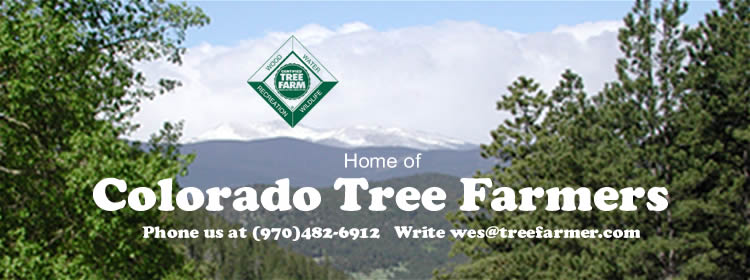As I mentioned in the last email alert, the Northern Front Range Mountain Pine Beetle Working Group, which includes the US Forest Service, Colorado State Forest Service, Colorado State Extension Service, the City of Fort Collins, and Larimer County in
cooperation with Colorado State University, hosted a meeting on the "Mountain Pine Beetle on the Front Range" on October 25. It was nice to see that a number of you attended.
The speakers were generally very informative and were able to supply some new information on the beetle infestation. There is a good deal of evidence now that the pine beetle has moved from Lodgepole to Ponderosa in a number of areas. Although there is hope that less Ponderosa will be killed, the experts admit that this infestation is unprecedented and no one can say for sure.
New information from Canada indicates that the beetle can travel much further on wind currents than formerly believed. Folks in Fort Collins could have told them that. Some 240 trees in Fort Collins were definitely attacked by pine beetle in the last few months. The good news there is that the beetle seems to prefer the Scotch Pine over other species in town. The Scotch Pine, however, seems to produce more sap than other varieties and has successfully repelled the attacks to date.
_____________________________________________________
The Larimer County Tree Farmers held their quarterly meeting at the Colorado State Forest Service Office in Fort Collins last Thursday. We had a standing room only crowd to hear our guest expert Dave Leatherman, retired entomologist from CSFS. He emphasized that proper thinning to increase species and age diversity, and to remove infested and diseased trees, is still considered the best way to mitigate wildfire danger, beetle damage, and to improve your forest's health. He said that he was surprised by the speed with which the beetle infestation has spread and jumped from Lodgepole to Ponderosa and that even thinning may not prevent high mortality in some cases. He also emphasized that spraying can prevent beetle infestation but can't kill beetles already in your trees. It should only be considered for a limited number of trees close to your house or of special significance to you due to the methods used and high cost. During our next meeting we'll hear from the U.S. Forest Service.
______________________________________________________
The Colorado Tree Farmers have just sent to press a manual covering many of the topics addressed in the meetings noted above. It will be available to those attending our upcoming field tours to assist landowners in identifying beetle infestation, and understanding some of the treatment options being used by your neighbors. The manual is currently 110 pages long and covers wildfire mitigation, insect infestation, and much more. It is in binder form so that the most up-to-date information can continually be added to it as soon as available. Our field tours will also introduce you to professional foresters and local forestry contractors who can help you manage your forest or do some of the work for you. More information will be available in the next few weeks.
